
Reap the Savage Whirlwind ~ a Novel/Saga
by Ralpapajan
Discussing the research that goes into a work of fiction prior to the actual writing.
Basic Research ~ an Overview
Names, facts and where to look ~ in general.
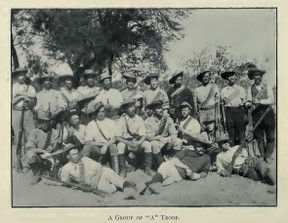 This is not a guide for everyone to follow ~ it is a simple look at the work that has gone into the writing of a novel prior to and during the actual composition.
This is not a guide for everyone to follow ~ it is a simple look at the work that has gone into the writing of a novel prior to and during the actual composition.
Reap the Savage Whirlwind takes its title from the passage in of Hosea 8:7."For they have sown the wind, and they shall reap the whirlwind: it hath no stalk: the bud shall yield no meal: if so be it yield, the strangers shall swallow it up" (KJV Ver.)
It is the story of three men and their lives and descendants from when they meet during the Boer War until the turn of the following century. Most of the action takes place in the country now called Zimbabwe.
One man is a Canadian backwoodsman, another is a Zulu prince with an interesting upbringing and the third the youngest son of a titled family from England sent out to Africa as a Remittance Man due to his chequered youth.
The credibility of the book depends upon the quality of the research carried out and this becomes obvious as time goes on and the book progresses.
The initial research was into the names and backgrounds of men and women of the era. The book is based mainly in the country called Rhodesia and progresses through two world wars, the Bush War, or Second Chimurenga and reaches a climax at the turn of the 20th Century after the Land Grab that was undertaken by the Zimbabwe Government.
As there were only a few hundred white men and women in the territory Between the Rivers; the Zambezi and the Limpopo; it was necessary that names of people who actually lived and visited there should if at all possible be avoided. Even though the disclaimer common to all works of fiction would appear at the beginning, any unsavoury comments about someone who could possibly refer to that person would be unacceptable. As the research progressed into this aspect lists of names were gathered and it became apparent that the internet today serves as a very useful tool for the writer.
After that came the acquisition of historical documents to support the writer's own memory and knowledge of the country. Resources as far away as the University of Zimbabwe and of Toronto provided PDF files of inestimable value. Amazingly every organisation provided everything free of charge.
The Museum of the Royal Canadian Regiment that served in the Boer war was a huge source of information. An auction house had, on their web site, artifacts that were on offer from that period and gave authenticity to the claims of the equipment used.
Finally there was personal contact with people who could provide the writer with first hand knowledge of the culture of, for example, the XhoiSan, who had inhabited both South Africa and Zimbabwe for possibly 20 000 years prior to eing conquered by immigrating Bantu Tribes from West Africa. The Tswana people from Bechuanaland, and the Tswana who had been forcibly moved to the Shashi River area of Rhodesia by Mzilkazi, the Zulu who formed a new Tribe, the Matabele, were also represented in the research. One person consulted still calls Shashi River home even though she today lives in Gauteng Province in South Africa.
Over the next days and, possibly, weeks, more modules will be added giving details of much of the research undertaken.
Weapons mentioned in the book
Just a few of the weapons researched. The credibility later on does tend to rely on the quality of facts referred to in the beginning of the book.
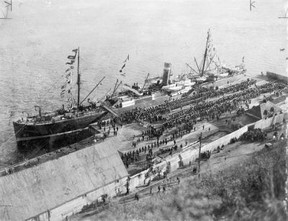
The Canadian in the book was brought up in Ontario and when he was 18 felt that he was a burden to his family who were only just eking out a living. In common with other youngsters he joined up although, at the time, he was completely unaware of the reasons for the war starting.
He joined the Royal Canadians in Toronto and trained with them. In common with the others he was issued with a Lee Metford rifle made in Enfield near Birmingham. It is here that the research becomes interesting. The Canadian Museum sites almost universally state that the weapon issued was a Lee-Enfield, the rifle from the same factory which took a hotter burning ammunition.

If this was used in the Metford it burnt away the 7 shallow rifling grooves in the barrel. It was a far better weapon and was in use with the British Army until the 1950's.The writer was trained on the SMLE from 1956, when he joined the Sea Cadets until 1961 when he was with the Royal Rhodesia Regiment.

Yet almost all the photographs he has seen of the Royal Canadians show them carrying the Metford and the bayonets in the Museum in London, Ontario, which I visited, shows Lee Metford bayonets, souvenirs of the conflict. Be that as it may he elected for his Canadians to carry the Metfords.
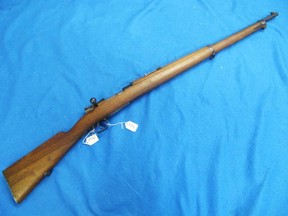
There was no such difference of opinion about the Boer weapon of choice. A Mauser with a 5 shot magazine with clip loading. This was a vastly superior weapon to the British forces, equipped as they were with the out-dated Martini-Henry, the Lee-Enfield, the Lee-Metford and others. Unfortunately for the Boers they too had to use older weapons and they took over the British ones as well using the British ammunition that was in greter supply than their own.
President Paul Kruger had had the foresight to import into the Transvaal Republic 30 000 Mausers before the war. In addition to the standard model there were also a few hand made rifles that were of superior finish. It was known as the Pleasure Mauser and they were available to those senior Boer Burghers who would later make up the Commando leadership. During the war if anyone other than such a person was found with one of these rifles it was assumed that he or she would have taken it from a dead Boer. No record could be found as to what then happened to the assumed miscreant. One must use one's imagination.
In addition to the superior siting and balance of the German weapon another advantage over the British weapons was the clip loading of ammunition. The British used a rimmed cartridge whereas the German cartridge was rimless. This meant that the Boers using the clips were five times faster than their opposition. They could easily carry bandoliers of clips, while their enemy had to carry loose ammunition in pouches. Once the British magazine had been emptied their weapons effectively became single shots. Eventually the British did design a clip but that wasn't available during the war.
Another weapon that was issued to all the Regiments, though to officers and Scouts only, was the .455 Scot and Webley. There were apparently some Colts of the same calibre also in use.
During the war there was an Irish officer named John Blake who is recorded as fighting for the Boers. Many years after the war the writer saw one of a pair of Smith and Wesson .450 calibre pistols that were silver plated and were very intricately engraved. On a name plate there was the legend 'Presented to China Blake' and dated in the late 1890's. He could never establish who this Blake was and whether or not he was the Irishman. All he was able to ascertain from the current owner was that he had been called China after spending some years in that country and had the habit of starting sentences with "When I was in China we..." He was also told that the future Prime Minister of Rhodesia, then Dr Godfrey Huggins had been given the other one. Enquiries at the time failed to elicit a response.
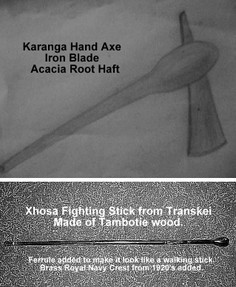
Finally, the weapon of choice of the Zulu warrior was a short stabbing spear and a Fighting Stick or knobkerrie. In addition he would also carry a hand axe. The latter resembled the English hoe, with the blade at right angles to the haft. However, there was also a more efficient axe where the blade is parallel to the haft. These would be carried over the shoulder and it is possible that the latter version could be uncomfortable.The writer managed to get hold of one of these in the late fifties that was made by a member of the Karanga Tribe whose village he lived in for a short while. The blade was hand forged out of iron mined locally and the haft out of the root of an acacia tree. Regrettably it disappeared many years ago.
He also has a Xhosa fighting stick from the Transkei. This one is made out of Tambotie wood. It can be used as a walking stick though at one time they were banned on third class trains on the railways around Durban. He had to convince the train security that he was no threat before they would let him get on. Although after a while they got used to the crazy white man travelling in the trains crowded with black workers.
The Uniforms and Equipment of the Boer War
The discrepancies that are revealed in history.
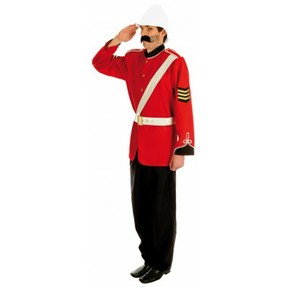 This is interesting research.
This is interesting research.
There seems to be some discrepancies between the Museums and Historical Sites as to exactly what uniforms were actually worn during the war. For example, the Boer Stories told by historians in South Africa were derisory of the British due to their wearing bright red uniforms with white strapping on the chest, sometimes crossed, and white pith helmets. These made good sighting points as one can imagine. Officers also wore sidearms and this indicated their rank. Thus it was that an order was passed that officers should conceal their revolvers to prevent themselves becoming a target.
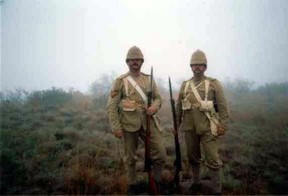 The British sites, however, claim that khaki was worn after the Indian campaigns and that the army had almost completed the transition to the drab uniforms of WWI. Letters and diary entries from that era seem to tell a different story. One writer described how his regiment advanced on a Boer position but the men were unable to detect anyone in occupation. They themselves were exposed fully and it soon became apparent that the Boers were there and could see them. The Mauser smokeless cartridges did not give away any of the Boers positions. Another letter describes how the white pith helmets - which incidentally were made in what is today Vietnam - were dulled down by dying them with tea or using mud. Yet the photographs show only khaki helmets. Another diary entry states that khaki covers were made during the war to cover the helmets. This almost certainly refers to the Zulu War and not the Boer!
The British sites, however, claim that khaki was worn after the Indian campaigns and that the army had almost completed the transition to the drab uniforms of WWI. Letters and diary entries from that era seem to tell a different story. One writer described how his regiment advanced on a Boer position but the men were unable to detect anyone in occupation. They themselves were exposed fully and it soon became apparent that the Boers were there and could see them. The Mauser smokeless cartridges did not give away any of the Boers positions. Another letter describes how the white pith helmets - which incidentally were made in what is today Vietnam - were dulled down by dying them with tea or using mud. Yet the photographs show only khaki helmets. Another diary entry states that khaki covers were made during the war to cover the helmets. This almost certainly refers to the Zulu War and not the Boer!
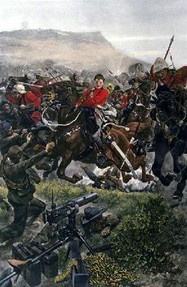 At the Battle of Elandslaagte, a British victory and one that obviously occupies pride of place in museum entries, the 5th Lancers charged a retreating Boer Commando and the painting hanging in one museum shows Red and White dressed soldiers charging the enemy. One Scottish regiment's uniform actually wears to this day a unifrom that is a form of camouflage. The uniform is made of Hodden Grey, a material formerly woven by Scottish peasants using black and white sheeps wool.
At the Battle of Elandslaagte, a British victory and one that obviously occupies pride of place in museum entries, the 5th Lancers charged a retreating Boer Commando and the painting hanging in one museum shows Red and White dressed soldiers charging the enemy. One Scottish regiment's uniform actually wears to this day a unifrom that is a form of camouflage. The uniform is made of Hodden Grey, a material formerly woven by Scottish peasants using black and white sheeps wool.
Other Scots regiments wore kilts and in the drab South African veld these stood out. The troopers made up coverings to conceal them. It can be said that never before had the use of the correct camouflaged uniforms been so important as in this war.
The Boers showed the British army commanders the importance of such camouflage In past wars the Thin Red Line had been the order of the day. Two lines of foot soldiers would advance towards the enemy, they would halt. The front line would kneel and fire a volley, then as they re-loaded the standing line would fire and then reload. With the advent of the more easily loaded magazine fed rifles this tactic was, to put it simply, wrong. One point of interest that a hundred and twenty years before the Boer war another war was fought between the American Colonists and the British in which many of the Colonists wore fawn leather clothing. It is strange that stiff-necked British army commanders were unable to see what disadvantage their troops were under.
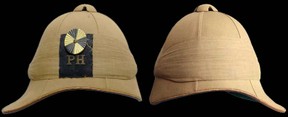
Another item of equipment that bears look at in more detail is the pith helmet.
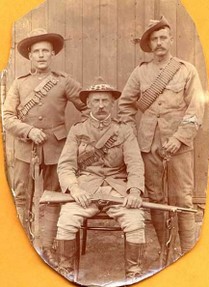
The Canadians who wrote home tell of being equipped with these, yet photographs in museums show the men wearing slouch hats. One such diary entry describes how the helmet was designed to protect the neck from the sun whilst in front the peak shaded the eyes. This was fine when standing but when in a prone position to enable the soldier to shoot at his enemy when he lifted his head up the helmet tipped forward and blocked his vision. To off set this, whenever the men had to lay down to shoot they would wear the helmets back to front.
This photograph appears in many sites. One such site states, "This is the enemy the Boers were shooting at. The invaders of their country, much the same as the Taliban of today."
What people fail to understand that the African Bantu or Nguni peoples believed that it was their country, whilst in fact they had taken it away from the Xhoixhoi and San peoples, now lumped together as KhoiSan.
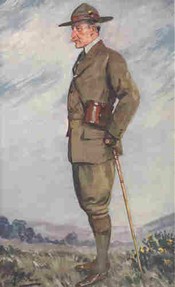
Speaking of hats. The famous Boy Scout hat, similar to the RCMP hat, was worn by Robert Baden-Powell and has become associated with him. What is not known so widely is that not only was his hat inspired by someone else but that the Scoutcraft that appeared in the book Scouting for Boys that he published when asked to form a youth movement by his king, was the brainchild of the same person. That man was the American Scout Frank Burnham, who met B-P whilst scouting for the British in Matabeleland. This does not denigrate B-P in any way it is just a statement of fact, even the most erudite of men can and do learn from others. B-P put together all he had leaned and formulated an idea realised a movement that today has over 100 million active members all over the world.
Binoculars, horses and saddles.
Further research
When reading a book many people tend to pick up errors of fact in the text. One annoying habit that seems quite prevalent in library books are corrections made to the text in pen. Even worse is the comments sometimes appended, also in ink, that disparage the writer due to an error of either name or some other detail that the reader knows about. Thus it is that the author of Reap the Savage Whirlwind has tried to make sure that the historical facts are correct. This becomes quite difficult with an historical novel for the facts have been relegated to history.
What is believed to be a fact to one person can be the opposite to another, for history is subjective. It is in fact simply a statement of the beliefs of one set of persons compared to the statement of beliefs of another. The arguments over WWII are an example. It was Churchill who wrote: "History will be kind to me for I intend to write it." Other historians present a far different picture of Churchill that the one he does but such is the power of popular opinion that their historical reports are often ignored or denigrated.
It is for this reason that the author has taken great pains to ensure that at least the question of uniforms and equipment is relatively accurate. Even with regards to such mundane matters there are differences of opinion. The equipment that the characters of the book use were used in this period.
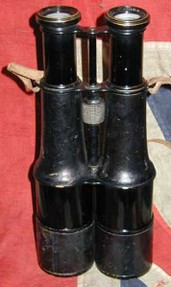
Take, for example, a pair of binoculars. Such mundane objects are commonplace today but in 1900 they were not that prevalent, their possession being limited to officers, scouts and, of course, the wealthy gentleman. The characters use two such items. One is a duplicate of the pair used by Frederick Burnham, the American Scout.
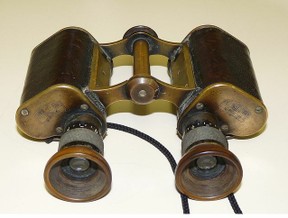
The other is a pair of Zeiss Feldstecher which were more likely to be used by a Boer Burgher. Each existed at the time, for there are examples in museums in various places. There was a pair of the latter in a small museum in Barberton in the early seventies along with the Mauser rifle owned by President Paul Kruger whilst there are examples of the other on sale in the United States even today.
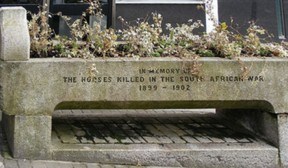 Then there were the horses used. The horse was the common method of transport throughout the war. The Imperial Army used at least 320 000 of them. Most of them died. It is recorded that in excess of hal million actually died.
Then there were the horses used. The horse was the common method of transport throughout the war. The Imperial Army used at least 320 000 of them. Most of them died. It is recorded that in excess of hal million actually died.
To the Boer, it was his preferred method of travel.
At that time the Basotho tribesmen had already developed a so-called pony (it was some 14.3 HH on average.) that had been bred originally from horses that had been stolen or otherwise acquired from the Dutch in the Cape. These ponies bred over nearly 250 years had become a breed all of their own. The war reduced their numbers so drastically that it took another 80 or so years for them to recover. Although British sites play down this aspect the losses of horses from bad management was well known at the time and is mentioned quite extensively.
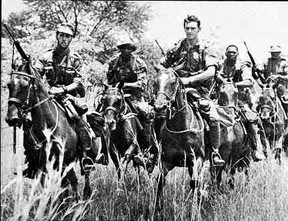
These horses had to be saddled and although the British Army designed a saddle it was not in any way the match of the American McClellan Saddle. This latter saddle is used to this day by the Zimbabwe Police and was the saddle that every British South African Police recruit learnt to ride in for almost the entire existence of Rhodesia. Indeed the author learnt to ride in a Mclellan and it was, even though more than forty years old at the time his saddle of choice.
Thus it was that the book's characters were lucky enough to get horses bearing McCellans.
Dzimba dza mabwe or Great Zimbabwe.
Where the country got its name.
"Discovered" by Carl Mauch on September 5 1875.
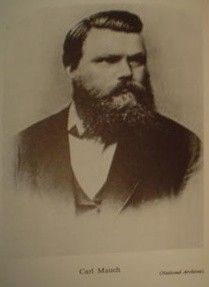
Why say discovered? It should be "seen by Carl Mauch for the first time". He was led their by his African guide. In any case he was not the first white man. It is recorded that at least one other white man had visited there long before Mauch. So maybe it should read: "The first white man to write about seeing the ruins." Ever since then there has been speculation as to its origins. White people claim that it must have been built by other whites and include into this the Arabs. Nowadays it is fashionable to state that white people, in the shape of Cecil John Rhodes and Ian Douglas Smith specifically destroyed evidence that proved that the ruins were built by Africans. Do people not realise that the term African includes EVERYONE from Cape Town to Cairo? From east to West? That the movement of peoples over the centuries all over Africa was so widespread that almost every country was settled and re-settled as the ebb and flow of the people took place.
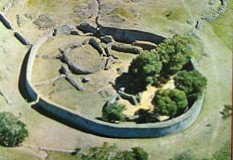 What was actually stated was that "The African people currently occupying the country between the rivers - the Zambezi or Great River and the Limpopo - could not have built it." And THAT on the surface at the time either in 1890 or 1960 was probably true, for if they were able to build something so great then why did they choose to live in thatch rondavels or pole and dagga huts? To the left we see the Mumbahuru with granite 11 meter high walls.
What was actually stated was that "The African people currently occupying the country between the rivers - the Zambezi or Great River and the Limpopo - could not have built it." And THAT on the surface at the time either in 1890 or 1960 was probably true, for if they were able to build something so great then why did they choose to live in thatch rondavels or pole and dagga huts? To the left we see the Mumbahuru with granite 11 meter high walls.
For more information especially with regards the formation of the buildings see Great Zimababwe
However, when the Matabele arrived they thought that the existing occupants especially the Mashona were, in the words of Arnold Schwarzenegger, "girly men". After several hundred years of peace they had forgotten how to fight. As an aside, philosophers have stated that war is necessary to keep people prepared. If the world ever does get to the state of universal peace then this is a likely scenario. People will forget how to fight. Where then does the term Shona come from? There are several ideas about this. One is that the Matabele named them from their language meaning "the people over there". Another is that the Matabele means "the people over there who do not know how to fight". Take your choice and pay your money.
Whatever the reason for the naming it seems correct that they were not called Mashona until after 1835. And that begs another question.Until the latter half of the 20th Century history stated that the Kingdom of Monomotapa was only around the Zambezi. Later on the story changes and it now strecthes from river to river. There was only one such kingdom mentioned the Monomotapa - which coincidentally is a Portuguese word. Now it suddenly supersedes the Kingdom of Zimbabwe. No mention of the make-up of the Shona people is made. No mention, for example of the Makaranga people or the Rosvi. The Karanga never occupied Great Zimbabwe - the Rosvi occupied the area around the ruins. So how did a people who only gained their name in the 19th century found a kingdom in the 16th?
The Effects of the Boer War on South Africa
Physical effects mainly.
One of the after effects of the Boer War was the way the countryside was changed by the war.
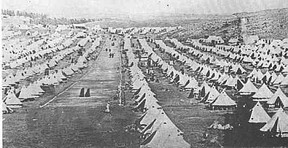 The psyche of all South Africans changed ~ in most cases for the worse ~ as a result of the killing, the burnt earth policy, where Boer farms were totally destroyed to stop food production, the concentration camps where women and children were interred, and those same camps that were filled with the local people. These policies decided by generals such as Kitchener and Buller that were designed to subdue the population and starve all people who opposed the English Queen, a sovereign, who incidentally, did not have ONE year of peace throughout her reign, the longest reign of any British monarch. This is threatened by the current incumbent and the wars continue with British troops fighting wars in various parts of the world.
The psyche of all South Africans changed ~ in most cases for the worse ~ as a result of the killing, the burnt earth policy, where Boer farms were totally destroyed to stop food production, the concentration camps where women and children were interred, and those same camps that were filled with the local people. These policies decided by generals such as Kitchener and Buller that were designed to subdue the population and starve all people who opposed the English Queen, a sovereign, who incidentally, did not have ONE year of peace throughout her reign, the longest reign of any British monarch. This is threatened by the current incumbent and the wars continue with British troops fighting wars in various parts of the world.
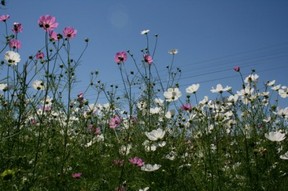 There was one amazing result that changed South African landscape for the better. As stated before the British brought as many as half a million horses to South Africa. Despite the evidence that they were very wasteful with the animals and did not treat them all that well they did bring out many thousands of tons of horse feed. It is strange to think that the only people who benefited from the war and its result were those who gained ownership of the minerals of the country and that everyone else suffered. The people who owned the companies that supplied equipment and, in this case, the horse fodder made fortunes as individuals. Their workers were paid a pittance and the horses died.Mixed in with this horse food were all types of seeds and other goodies that horses need to gain the stamina required to gallop into battle. The South African bound food contained the seed of the Cosmos flower both purple and white. And these seeds, if they were not masticated thoroughly, passed straight through the horse.
There was one amazing result that changed South African landscape for the better. As stated before the British brought as many as half a million horses to South Africa. Despite the evidence that they were very wasteful with the animals and did not treat them all that well they did bring out many thousands of tons of horse feed. It is strange to think that the only people who benefited from the war and its result were those who gained ownership of the minerals of the country and that everyone else suffered. The people who owned the companies that supplied equipment and, in this case, the horse fodder made fortunes as individuals. Their workers were paid a pittance and the horses died.Mixed in with this horse food were all types of seeds and other goodies that horses need to gain the stamina required to gallop into battle. The South African bound food contained the seed of the Cosmos flower both purple and white. And these seeds, if they were not masticated thoroughly, passed straight through the horse.
There is a story, possibly apocryphal, that local people were astounded to see what had been bare stretches of veld suddenly, in the space of a few years, bloom into life with patches of cosmos as they flower in the rainy seasons of the sub-continent. Every state as it was then, Cape of Good Hope, Orange Free State, Transvaal Republic and Natal, wherever the British Army went, bloomed with flowers. One can, even today, follow the British Army of 1899 - 1902 around the the Republic following a Trail of Flowers.It is this mixed heritage of the Boer War that the is the background to the book, Reap the Savage Whirlwind.
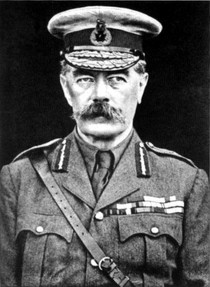 The same British that changed the face of South Africa also changed the face of the Land between the Rivers, now known as Zimbabwe. As in South Africa they left an inheritance of hatred and destruction mixed with development and growth. Thus it is that the peoples of Rhodesia were left with lingering feelings about their history. One can only speculate as to what could have been the result if the colonists, the conquerors, had, instead of taking the land and subjugating the people, had instead honoured their word and treaties, and worked with them to provide a future for all.
The same British that changed the face of South Africa also changed the face of the Land between the Rivers, now known as Zimbabwe. As in South Africa they left an inheritance of hatred and destruction mixed with development and growth. Thus it is that the peoples of Rhodesia were left with lingering feelings about their history. One can only speculate as to what could have been the result if the colonists, the conquerors, had, instead of taking the land and subjugating the people, had instead honoured their word and treaties, and worked with them to provide a future for all.
The results that have happened subsequently. The Bush War, the ascent of a tyrant, the farm dispossessions and the emigration of white Rhodesians were all so unnecessary.
Lord Kitchener ~ British War Criminal
Although politicians and business men controlled as they were by greed did not see this or even care.
You might also like
The Role of Sleep in Fairy Tales with ExamplesSleep is crucial in numerous fairy tales. What are the main things we can exp...
Pentamerone, or The Tale of TalesPentamerone is a popular name of the book originally titled The Tale of Tales...
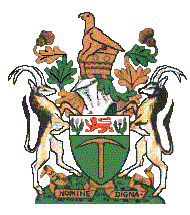


 The Bicycle - A Magic Carpet of Dreams?on 02/19/2014
The Bicycle - A Magic Carpet of Dreams?on 02/19/2014
 Only a bike? No, it's also a tripodon 02/16/2014
Only a bike? No, it's also a tripodon 02/16/2014
 Nikola Tesla ~ Serbian Geniuson 08/28/2013
Nikola Tesla ~ Serbian Geniuson 08/28/2013
 Matt Orchel ~ Artiston 08/09/2013
Matt Orchel ~ Artiston 08/09/2013
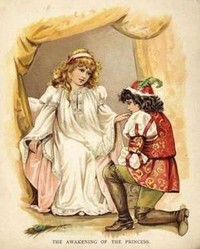
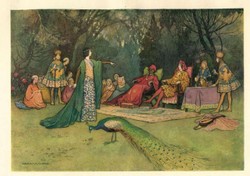
Comments
Thank you. This page is a record of some of the research I conducted ~ it is not the substance of the novel itself.
As I point out there is some discrepancy in the reports. At the Battle of Majuba, which as you say is in 1881, the Brits did wear Scarlet and were easy pickings. However, in one museum in Bloemfontein the scarlet uniform is also mentioned in the Second South African War as it was termed. I suspect that it actually refers to the Dress Uniform that was still in use.
The Scarlet Uniform at Elandslaagte was a surprise to me as well. "Khaki was universally approved for foreign service wear in 1898 and was worn at the Battle of Omdurman that year, and then in the second Anglo Boer War (1899-1902). Some lessons are hard to learn, however. Though the Scottish regiments wore khaki tunics as they went into action against the Boers, they continued their tradition of sporting colourful, conspicuous tartans. The marksmanship of the Boers soon convinced the Highlanders to adopt khaki kilt aprons to cover their tartans, and the Lowland troops to forego their tartan trews in favor of khaki trousers." Jim Hillestead,
The novel itself starts before the Boer War and leaves the war after the relief of Kimberley. The British to me, I am afraid, being more South African than English, did not behave well in the Boer War. I am sure you are aware of the Concentration Camps etc. However, as my novel looks at the entire scene from the perspective of the local people rather than the invaders, people will obviously disagree with it. Which is fine for it is after all a novel and I want people to think and do research.
You will also have noticed that the Royal Canadians wore khaki and slouch hats. These are shown in all photos that I received. However, in letters written by the soldiers they complained about the pith helmet design and colour. So I guess that there were all sorts of things going on.
The research is of course not the substance it is the background.
I thank you for your input. I appreciate it and the time you have taken to write this comment. I hope that you get a copy of my novel and that you enjoy it.
Very interesting but I fear there might be a little confusion with the first Boer War of 1881 when the British soldiers were most definitely in scarlet tunics with white 'valise' equipment that involved straps across the chest (albeit vertically). By the latter part of the Anglo/Sudan Wars of the late 1890s the idealogical war between 'Home Establishment' supporters of grey uniforms and 'Indian Establishment' supporters of khaki uniforms had been decisively won by the khaki lobby so that the Army deployed to South Africa between 1899 was dressed first in khaki cotton and later in khaki serge, this was further bolstered by a massive contract for Indian favoured Khaki puttees made by a small company 'Fox's' (still in existence) in England. The helmets were initially stained as they had been in the Sudan but by late 1900 covers were issued and by late 1901 the slouch hat was worn almost universally. So significant was the impetus towards khaki that in 1902 a new serge service dress was issued that utilised lessons learned from the war and incorporated chest and skirt pockets that had been so useful in the officers frock of the late 1890s. As a result of this the British entered WW1 with one of the most advanced combat uniforms in the world, together with web equipment that had also been inspired by experience in South Africa. Far from being 'stick in the muds' the British had quickly learned the hard lessons delivered by the Boers and these were to directly influence not just uniforms and equipment but also marksmanship training. I have studied British uniforms all my life and I hope that these comments will be useful to you and add some accuracy to your novel, you will do the British Army an injustice if they are ignored. With best wishes, Robert Bennett
Yup. Indeed it is. Latest bit is now posted. Probably do a bit more tomorrow. Though my eldest who lives in Okinawa arrives tonight for a three week visit. I will be teaching her all about Wizzley as well.
I have Adobe if that is any help?
That is great. I will help you all I can. I can also publish and put on sale for you a "hard copy" book. Let me know.
When the time is right I will send the .pdf plus a link to get a very simple free reader.
TYVM
By all means send it and I will try and read it. Don't know much about .pdf though but am interested in the whole concept of EBook and Kindle etc. Just might try putting a collection of my short stories on this but really am clueless. I think I'm beyond upsetting now, nostalgic and saddened yes though.
Cheers, Spook. The book is scheduled for publication in December. First as a Paperback and then as an EBook plus Kindle.
I will need someone who is intelligent AND who knows something about Rhodesia as well as Zimbabwe to review it, If you are interested I will send you a .pdf edition.
It may upset you a bit by raking up old memories. Up to you.
Fascinating and always love reading and finding things about home. Despite all the time I have been away I still miss it. As things stand however I won't go back but I wish I could.